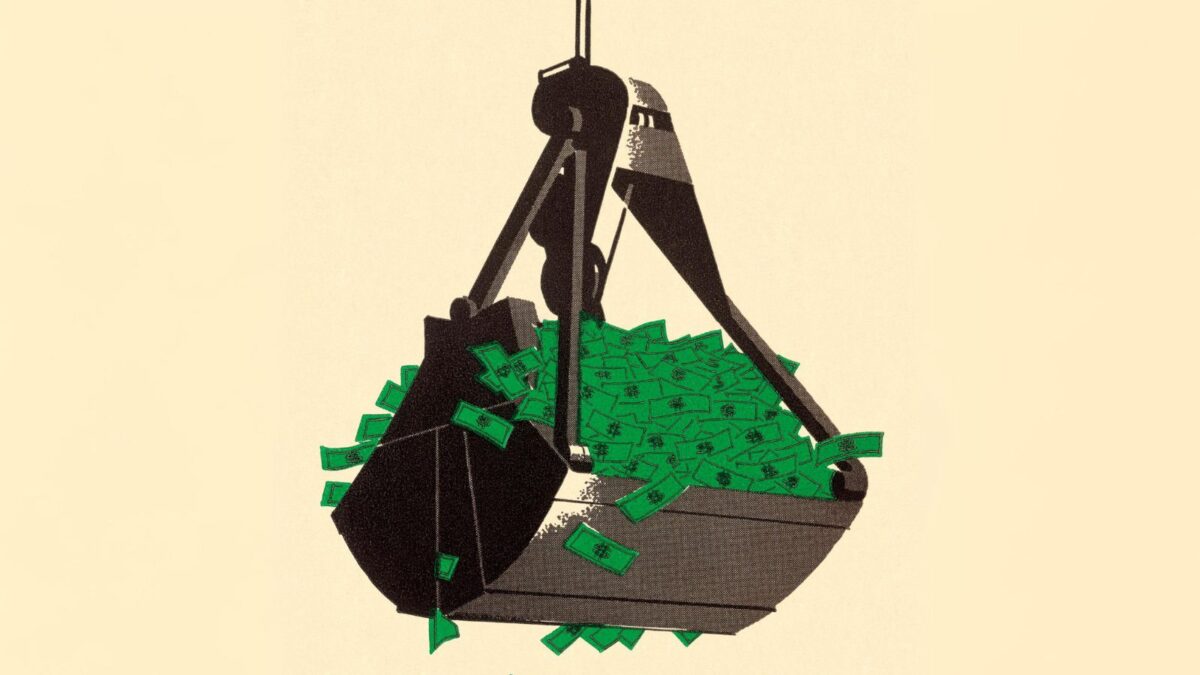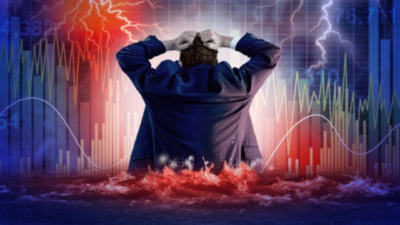Why investors can’t keep getting money for nothing (or their kicks for free)
Over the last eight months the Ruffer portfolio has stabilised, and the investor experience similar to having one’s cash in the bank – but not any better than that. There’s no boast there – and you certainly don’t need an investment machine and whinnying experts discussing arcane investment strategies to get a cash return. So why bother?
It’s an important question, and I address it because not only do I have an answer, but I believe it, too; it’s why I set the business up 30 years ago. We opened for business on 8 December 1994, and this investment review sets out, again, what we are trying to achieve. It’s fair to say that we are more concerned with preservation of money, so the market indices are not the primary competition – but the return on cash has to be beaten, relentlessly, constantly, and by a proper margin.
Because of this cautious aspiration, we are sometimes regarded as ‘perma-bears’, and our claim to be all-weather investors is treated like the chippy who howls in the wind about his chips being ‘world class’. If we were indeed bearish all the time, the bull market which has played out over our entire existence would surely have polished us off; but it hasn’t, and indeed we’ve thrived through it.
This brings me back to the “why bother?”. What’s the argument for holding Ruffer, just to have received a cash-like return? The answer is that, over the last eight months, clients have had a similar experience to the risk-free rate which is our true competitor, plus the possibility of solid returns from a dislocative market – conditions which conventional wisdom always regards as highly unlikely, but which nevertheless keep happening.
Indeed, these dislocative episodes are the concomitant of a complete absence (since 1982) of any conventional bear market where prices drift consistently lower, with some rallies and sharper sell-offs. They have been displaced by markets which have gone up nearly all the time, collapsing periodically – only to recover again. Historically, we have preserved client capital in each of the collapses, deployed it in the ensuing panic, and therefore been well-placed to benefit from the recovery. My verdict? Great in the chicanes, but invariably underpowered on the straights. But now, we see fewer straights ahead of us…
Every chef likes the smell of his own cooking, and the following observations talk our (cook)book – but we have the same skin in the game as our clients do. We see markets that are expensive, driven by powerful forces which want to turn a 40 year bull market into the first ever 50 year one. That trend is not one to embrace, but it’s dangerous to stand in its way. So we have half the portfolio’s assets in near-cash, and that allows more adventure in the other half. The conditions today feel similar to two earlier booms.
One was the dot.com boom of 1999 where it was the extrapolation of good news, not the good news itself, which proved investors’ undoing: wrong valuations on often great opportunities. The earlier one was the 1987 crash, which was essentially (like today) a maelstrom of soaring markets colliding head-on with protections which, in the event, turned out to be more gun-pointed-at-foot than trusty gun dog. In today’s markets, we sense a lot of leverage, and very few Labradors.
Those who follow markets closely will be aware of the sharp setback which occurred throughout the world on 5 August. That brought the naysayers onto the street in big numbers – but, by the time their placards were unfolded (“We told you so!”, “The end of the world is nigh!”), the markets had recovered, and made up for lost ground. It was a very instructive time, and fascinating for us to see its pathology in the light of our dispositions. That summer storm showed how the water cascaded down from the high ground. At its centre was the sudden reversal of the yen from uncontrollable weakness to coiled-spring strength – strength which has been maintained ever since.
Two of the last three investment reviews set out in extenso why we thought yen strength was a certainty, and why that self-same strength may undermine the health of the investment outlook throughout the world. It also transformed the other protections we had: the market volatility indicators tripled, more than seemed reasonable; credit spreads went up by 25 per cent, less than seemed likely. If 5 August was, as we strongly believe, a dress rehearsal, then our portfolios have learnt their lines.
The rest of this review takes a look at that second of our defensive investments – credit spreads – and explains what they are, and why they are essential ingredients in the stew. The central disadvantage in holding them is that – unlike most assets – there is an ongoing cost to doing so, and of course the more it costs to hold them, the more pressure there is to be right quickly. Set against that is one of the tenets of our investment philosophy: the more sure you are that a dynamic will occur, the less you need to worry about when it will come about. Nevertheless, we (and doubtless our investors) would like our credit spread investments to come right pretty quickly.
So what are they? As an investment, credit spreads don’t pass the “does it do what it says on the tin” test. Credit is the generic term for corporate fixed interest stocks, which might loosely be defined as instruments which give the holder an interest rate return on the money invested, rather than an equity (i.e. ownership) interest. Until the 1950s, all serious investment was about the evaluation of the safety of the borrower – the flakier the borrower, the higher the interest rate. When Schroders (fly-by-night bankers in the 1860s) engineered at that time the first Japanese loan, the interest coupon was 7 per cent, a rate even higher than the reward for investing in the known volatility of South America and, I think, of every other national entity.
“Spread” is the articulation of that difference – the extra yield one receives for taking on extra risk. The spread is established when a bond is first issued, but market forces will, constantly reassessing the risk of the bond over time, move it to trade more expensively or cheaply against other securities regarded as having similar characteristics within the food chain.
We see markets that are expensive, driven by powerful forces which want to turn a 40 year bull market into the first-ever 50 year one.
From the 1950s onwards, as equities came to dominate markets, the centrality of this dynamic passed, and fixed interest joined the radio and the railways in the ranks of the titans of yesteryear. But to us they are important once again: increasing leverage (aka borrowings) in financial markets has made these spreads, arcane to the rest of the world but pivotal within that village, a key driver of financial system stability. Most important of all is ‘investment grade’ credit – another gobble in this gobbledegook market. In the hierarchy of safety, investment grade bonds offer a higher interest rate than government, but a lower rate than ‘high yield’ (formerly known as junk bonds!).
Why do investors own investment grade credit? Because it provides a higher yield than the equivalent government bond, with an almost imperceptible increase in risk. Indeed one could happily argue that Microsoft (‘AAA’ rated, like the United States itself) has a much better balance sheet than the government. This sense of “something for nothing” is endlessly tempting for investors: if I have spare cash to invest in government debt, why would I not put it in investment grade debt instead, and scoop the (slightly) higher coupon?
What we own in portfolios is the spread – the differential in the yield between investment grade bonds and government bonds. Today the difference is about 0.5 per cent or 50 basis points (bps); that’s a low level when the world is happy in its handbasket, but in a rumpus, it can triple, and trade as high as 150 bps over government. Why should the spread widen in a moment of market volatility? Because in a crash everything feels less safe: when confronted with uncertainty, investors invariably try to disengage from longer-term commitments in favour of safety and liquidity. And repeated historical crises have shown that US treasuries are safer and more liquid than even investment grade credit.
So the level of credit spreads is currently at the low end, despite the over-borrowings in the world, and despite their inherent volatility suggesting that pricing them cheaply is dangerous. The investment grade credit spread asset class is in an index form, and the lower-quality end of its constituents are not (in our view) of investment grade at all. If there is a seize-up in markets, and the credit spread indexes move to reflect a higher spread – towards the top end of the range quoted above – these holdings alone would be expected to make well over a year’s return on the whole of a balanced portfolio at current rates.
To be able to run these positions costs money – a precious resource, which looks like wasted money when the protection these instruments offer goes unneeded. Provided we are right that the events will play out as forecast – as they have each time in the past, with not one of them missed – then a dullish performance, matching cash, is an excellent risk-reward while we wait.










